Introduction to Pongal and its Culinary Traditions
Pongal, a revered harvest festival in South India, particularly in Tamil Nadu, is a vibrant celebration of gratitude towards nature’s bounty. Central to this festivity are the Pongal Dishes, a collection of traditional recipes that are as simple in their making as they are rich in flavor.
These Pongal dishes, including the savory Ven Pongal made from rice and lentils and the sweet Sakkarai Pongal prepared with jaggery, embody the essence of the festival. They are not just culinary delights but also carry deep cultural significance, symbolizing prosperity and happiness.
The feast of Pongal is incomplete without the diverse array of dishes like the hearty Sambar, a lentil-based vegetable stew, and Medu Vada, crispy lentil fritters. These Pongal Dishes go beyond mere sustenance; they are a celebration of harvest, reflecting the age-old traditions and culinary mastery of South India.
Each of these Pongal dishes, prepared with love and served with warmth during the Pongal festivities, brings families together, strengthening bonds and honoring the land that feeds them.
Ven Pongal – Best Among Pongal Dishes
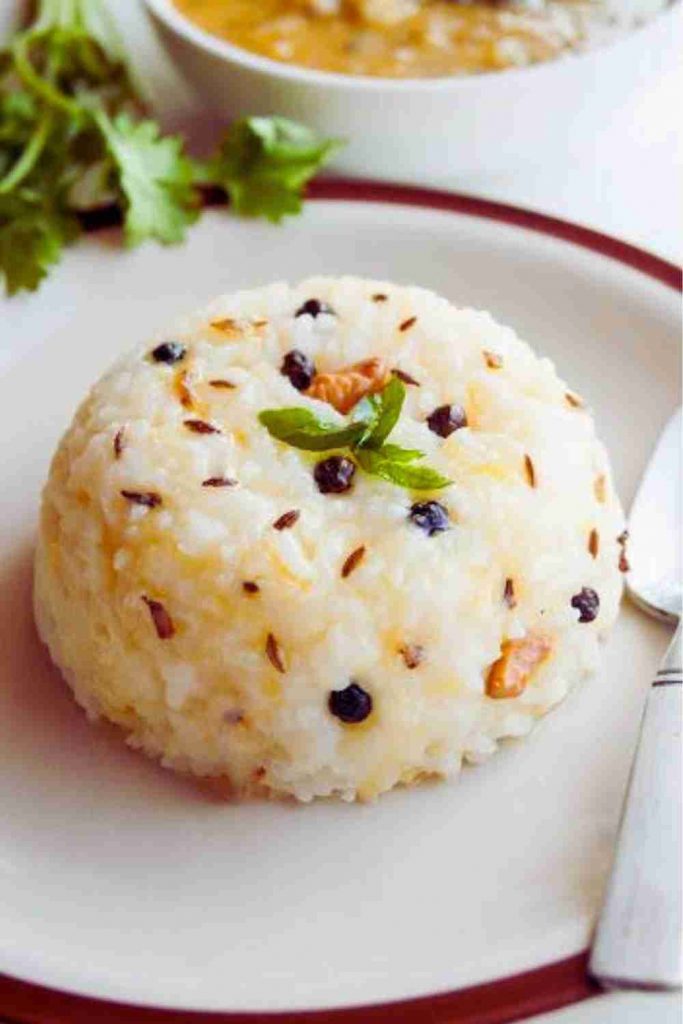
About the Recipe
Ven Pongal, a classic South Indian dish, is a savory rice and lentil porridge. It is a staple during the Pongal festival, symbolizing a simple yet nourishing start to the day.
Ingredients
- 1 cup rice
- ½ cup moong dal
- 4 cups water
- 2 tbsp ghee
- 1 tsp cumin seeds
- 1 tsp black pepper
- A pinch of asafoetida (hing)
- Salt to taste
- Cashews and curry leaves for garnish
Preparation Time
10 minutes
Cooking Time
20 minutes
Total Time
30 minutes
Cuisine
South Indian Pongal Dishes
Course
Breakfast
Diet
Vegetarian
Instructions
- Dry roast moong dal until aromatic.
- Wash rice and roasted dal, then cook with water, salt, and a pinch of asafoetida.
- In a separate pan, heat ghee, fry cumin seeds, black pepper, cashews, and curry leaves.
- Add the tempering to the cooked rice and dal mixture.
- Mix well and serve hot.
Serving Size
Serves 4
Nutrition Facts
- Calories: Approximately 250 per serving
- Rich in carbohydrates and proteins
Conclusion
Ven Pongal is a delicious and wholesome dish, symbolizing simplicity and richness, much like the festival of Pongal itself.
FAQs
Can I use oil instead of ghee?
Yes, but ghee adds a unique flavor.
Is it gluten-free?
Yes, Ven Pongal is gluten-free.
Read More – Best Whiskey Brands and Best Places For Dinner In Hyderabad
Sakkarai Pongal
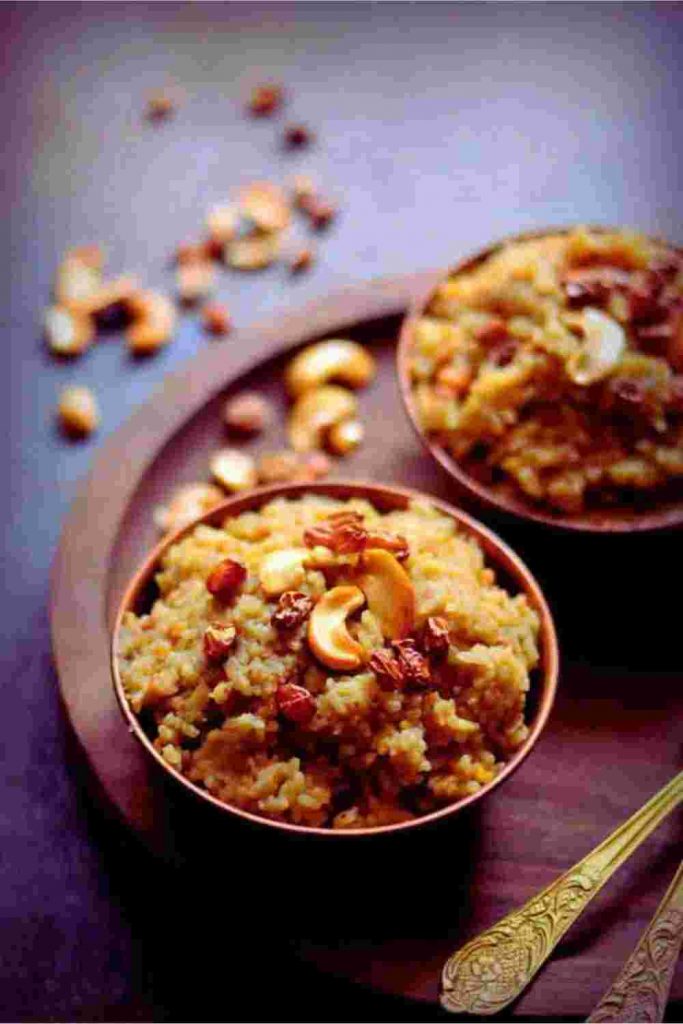
About the Recipe
Sakkarai Pongal is a beloved sweet dish in South Indian cuisine, especially during the Pongal festival. It’s a delightful combination of rice, moong dal, jaggery (unrefined sugar), and ghee, often flavored with cardamom and garnished with nuts.
Ingredients
- 1 cup rice
- ½ cup moong dal
- 2½ cups water
- 1½ cups jaggery, grated
- ½ cup milk
- ¼ cup ghee
- 1 tsp cardamom powder
- A handful of cashews and raisins
Preparation Time
10 minutes
Cooking Time
30 minutes
Total Time
40 minutes
Cuisine
South Indian
Course
Dessert
Diet
Vegetarian
Instructions
- Roast moong dal until fragrant, then wash along with rice.
- Cook the rice and dal with water and milk until soft.
- In another pan, melt jaggery with a little water to form a syrup.
- Add the jaggery syrup to the cooked rice and dal mixture.
- Heat ghee in a pan, fry the cashews and raisins, and add them to the Pongal along with cardamom powder.
- Stir well and cook for a few more minutes.
Serving Size
Serves 4-5
Nutrition Facts
- Calories: Approximately 300 per serving
- Rich in carbohydrates; contains protein from dal and healthy fats from ghee
Conclusion
Sakkarai Pongal is not just a dish but a celebration of sweetness and warmth, reflecting the spirit of the Pongal festival.
FAQs
Can I replace jaggery with sugar?
Yes, though jaggery offers a unique flavor and is healthier.
Is it necessary to add milk?
Milk adds richness, but you can make it without milk for a vegan version.
Learn More – Cool Restaurants In Hyderabad and Vodka Shots
Medu Vada
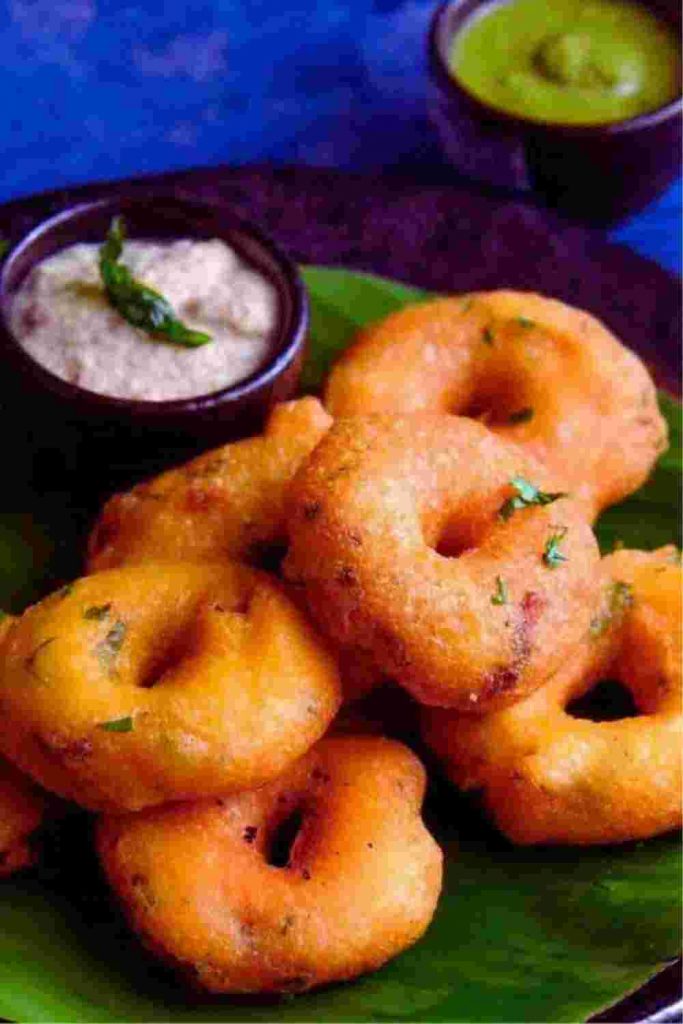
About the Recipe
Medu Vada is a crispy, savory doughnut-shaped fritter made from urad dal. It’s a common breakfast item and a must-have during festivals like Pongal.
Ingredients
- 1 cup urad dal (split black gram)
- 2-3 green chilies, finely chopped
- 1-inch ginger, finely chopped
- A few curry leaves, chopped
- 1 small onion, finely chopped (optional)
- Salt to taste
- Oil for frying
Preparation Time
4 hours soaking + 15 minutes
Cooking Time
20 minutes
Total Time
Approximately 4 hours 35 minutes
Cuisine
South Indian
Course
Snack/Breakfast
Diet
Vegetarian
Instructions
- Soak urad dal for at least 4 hours, then grind to a smooth batter.
- Mix in salt, green chilies, ginger, curry leaves, and onion.
- Heat oil in a pan. Wet your hands, take a small amount of batter, make a hole in the center, and slide it into the hot oil.
- Fry until golden and crisp. Drain on paper towels.
Serving Size
Serves 4-6
Nutrition Facts
- Calories: Approximately 100 per vada
- Rich in protein from urad dal
Conclusion
Medu Vada is not just a culinary delight but also a cultural symbol, representing the joy and festivity of Pongal.
FAQs
How to get the perfect shape?
Wet your hands each time to prevent sticking and to shape the vadas easily.
Can I prepare the batter in advance?
Yes, the batter can be refrigerated for 1-2 days.
Avial
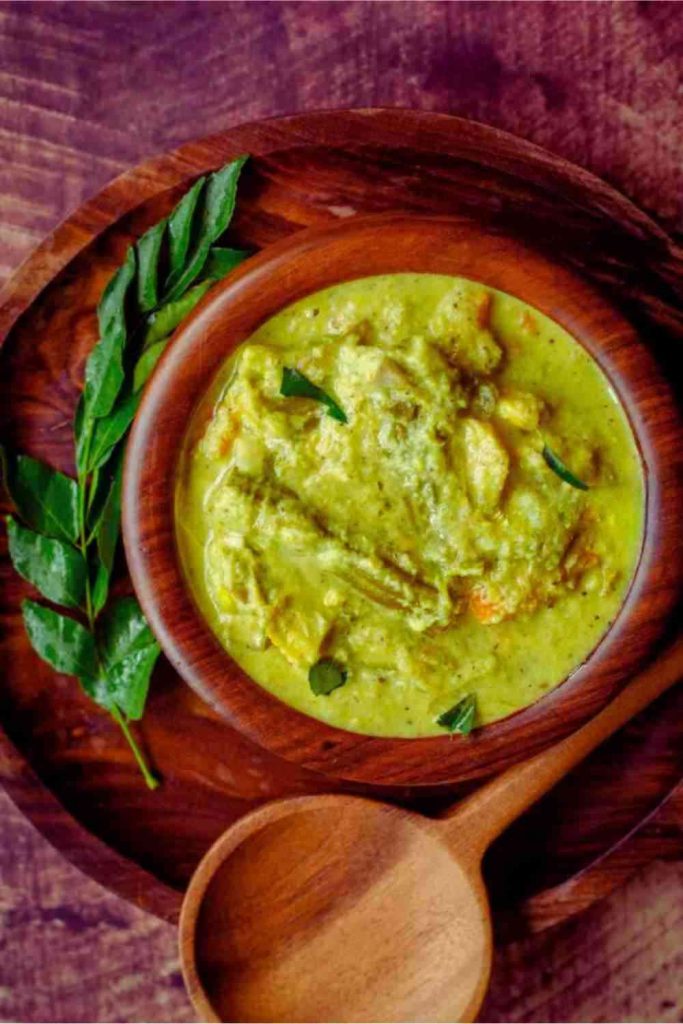
About the Recipe
Avial is a coconut-based mixed vegetable curry, prominent in South Indian cuisine. It’s a nutritious and delicious dish, typically served during the Pongal festival and other special occasions.
Ingredients
- 2 cups mixed vegetables (carrot, green beans, drumsticks, potato, raw banana)
- 1/2 cup grated coconut
- 2 green chilies
- 1/2 tsp cumin seeds
- 1/2 cup yogurt
- Few curry leaves
- 2 tbsp coconut oil
- Salt to taste
- 1/4 tsp turmeric powder
Preparation Time
15 minutes
Cooking Time
25 minutes
Total Time
40 minutes
Cuisine
South Indian
Course
Side Dish
Diet
Vegetarian
Instructions
- Boil the vegetables with turmeric powder and salt until just tender.
- Grind the coconut, green chilies, and cumin seeds to a fine paste.
- Add this paste to the cooked vegetables and mix well.
- Turn off the heat and mix in beaten yogurt.
- Drizzle with coconut oil and garnish with curry leaves.
Serving Size
Serves 4-6
Nutrition Facts
- Calories: Approximately 120 per serving
- Rich in fiber and essential nutrients from mixed vegetables
Conclusion
Avial is a testament to the simplicity and healthfulness of South Indian cuisine, making it a perfect dish for Pongal celebrations.
FAQs
Can I use sour yogurt?
Fresh yogurt is recommended to balance the flavors.
Which vegetables are best for Avial?
Traditional vegetables include drumsticks, carrots, green beans, and raw banana, but you can use any firm vegetables.
Lemon Rice
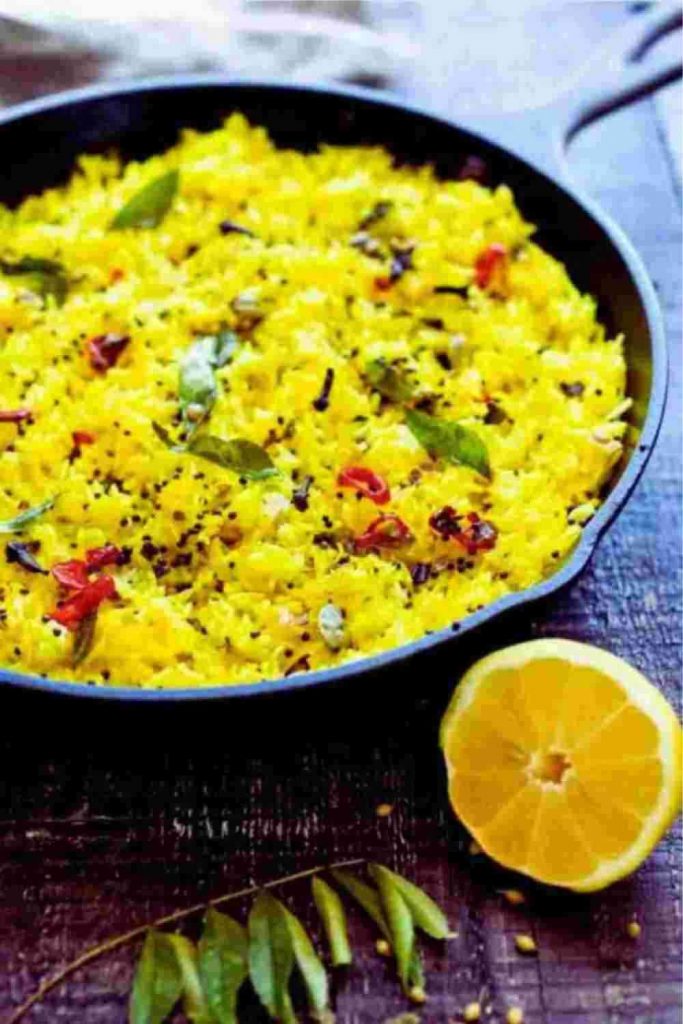
About the Recipe
Lemon Rice is a popular South Indian dish known for its bright flavor and simple preparation. It is a common part of meals during Pongal and other festive occasions.
Ingredients
- 1 cup cooked rice
- 2 tbsp lemon juice
- 1/2 tsp mustard seeds
- 1/2 tsp urad dal (split black gram)
- 1/2 tsp chana dal (split chickpeas)
- A pinch of asafoetida (hing)
- 1/4 tsp turmeric powder
- 1-2 green chilies, slit
- Few curry leaves
- 2 tbsp oil
- Salt to taste
- Roasted peanuts or cashews for garnish
Preparation Time
10 minutes (if using pre-cooked rice)
Cooking Time
10 minutes
Total Time
20 minutes
Cuisine
South Indian
Course
Main Course
Diet
Vegetarian
Instructions
- Heat oil in a pan, add mustard seeds, urad dal, chana dal, and asafoetida. Fry until the dals turn golden.
- Add green chilies, curry leaves, turmeric powder, and sauté for a few seconds.
- Mix in the cooked rice, salt, and lemon juice. Stir well.
- Garnish with roasted peanuts or cashews.
Serving Size
Serves 2-3
Nutrition Facts
- Calories: Approximately 200 per serving
- Good source of carbohydrates and provides vitamin C from lemon.
Conclusion
Lemon Rice is a simple yet delightful dish that brings a refreshing tang to the Pongal feast table.
FAQs
Can I use basmati rice for this recipe?
Yes, but traditionally short-grain rice is used for its sticky texture.
How can I adjust the tanginess?
Vary the amount of lemon juice according to taste.
Coconut Rice
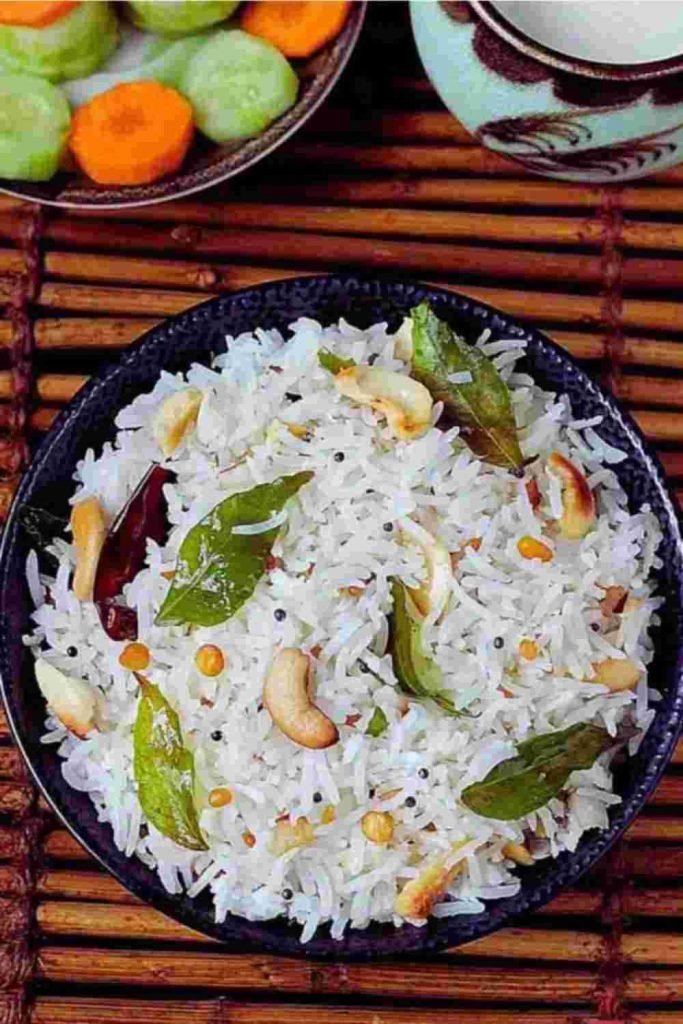
About the Recipe
Coconut Rice is a simple yet delicious dish made from rice and fresh grated coconut. It’s a perfect blend of nutty flavors and is often served during festivals like Pongal.
Ingredients
- 1 cup rice
- 1 cup grated coconut
- 2 tbsp oil or ghee
- 1/2 tsp mustard seeds
- 1/2 tsp urad dal (split black gram)
- 1/2 tsp chana dal (split chickpeas)
- A few curry leaves
- 2-3 green chilies, slit
- A pinch of asafoetida (hing)
- Salt to taste
- Cashews for garnish (optional)
Preparation Time
15 minutes (if using pre-cooked rice)
Cooking Time
10 minutes
Total Time
25 minutes
Cuisine
South Indian
Course
Main Course
Diet
Vegetarian
Instructions
- Cook rice and let it cool.
- In a pan, heat oil or ghee. Add mustard seeds, urad dal, chana dal, and asafoetida.
- Once the dals turn golden, add curry leaves, green chilies, and grated coconut. Sauté for a few minutes.
- Add the cooked rice, salt, and mix well. Garnish with cashews if desired.
Serving Size
Serves 2-3
Nutrition Facts
- Calories: Approximately 210 per serving
- Good source of healthy fats from coconut and energy from rice.
Conclusion
Coconut Rice, with its rich flavor and simplicity, is a celebration of the natural bounty and is a cherished dish during Pongal festivities.
FAQs
Can I use desiccated coconut instead of fresh?
Fresh coconut is preferred for its moisture and flavor, but desiccated coconut can be used in a pinch.
How can I make it more flavorful?
Adding a bit of ginger or a handful of roasted peanuts can enhance the flavor.
Tamarind Rice
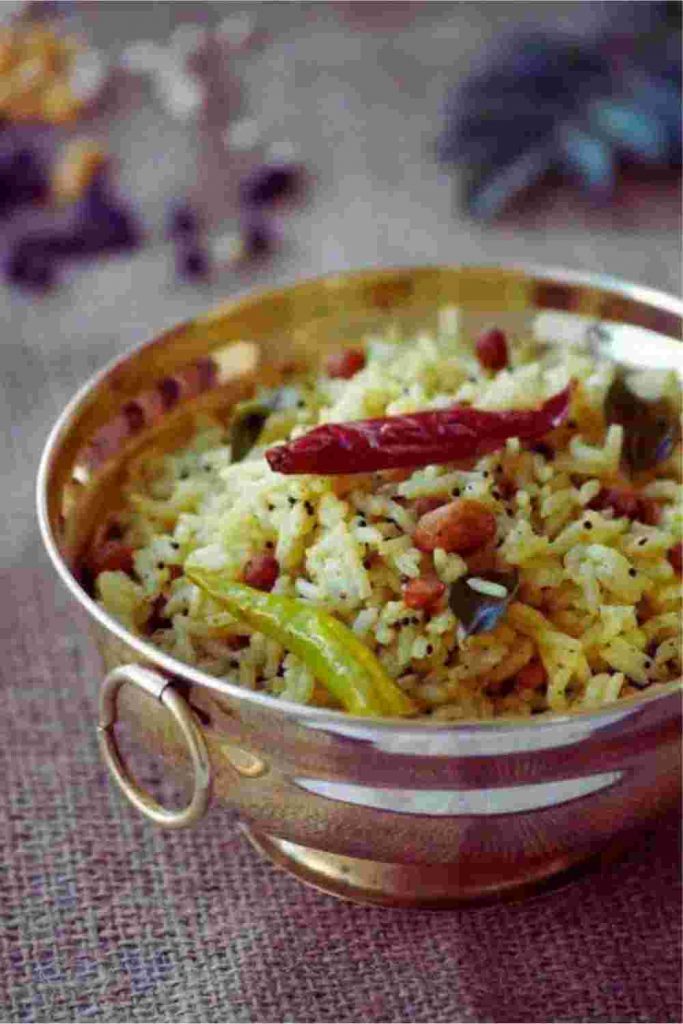
About the Recipe
Tamarind Rice, also known as Puliyodarai, is a popular South Indian dish that combines the tanginess of tamarind with aromatic spices. It’s a festive favorite, especially during Pongal.
Ingredients
- 1 cup rice
- 1/4 cup tamarind pulp
- 2 tbsp sesame oil
- 1 tsp mustard seeds
- 1/2 tsp asafoetida (hing)
- 1 tsp urad dal (split black gram)
- 1 tsp chana dal (split chickpeas)
- 1/2 tsp fenugreek seeds
- 2-3 dried red chilies
- A few curry leaves
- 1/4 tsp turmeric powder
- Salt to taste
- Roasted peanuts for garnish
Preparation Time
15 minutes (if using pre-cooked rice)
Cooking Time
20 minutes
Total Time
35 minutes
Cuisine
South Indian
Course
Main Course
Diet
Vegetarian
Instructions
- Cook rice and set aside to cool.
- Heat sesame oil in a pan, add mustard seeds, asafoetida, urad dal, chana dal, fenugreek seeds, red chilies, and curry leaves.
- Once the dals turn golden, add tamarind pulp, turmeric powder, and salt. Cook until the oil separates.
- Add this mixture to the cooked rice and mix well. Garnish with roasted peanuts.
Serving Size
Serves 2-3
Nutrition Facts
- Calories: Approximately 220 per serving
- Rich in carbohydrates and includes the digestive benefits of tamarind.
Conclusion
Tamarind Rice is a perfect blend of tangy and spicy flavors, making it a delightful addition to the Pongal feast.
FAQs
Can I prepare the tamarind mixture in advance?
Yes, it can be made ahead and stored in the refrigerator for up to a week.
How do I balance the tanginess of tamarind?
Adjust the amount of tamarind and jaggery (or sugar) to suit your taste.
Rasam
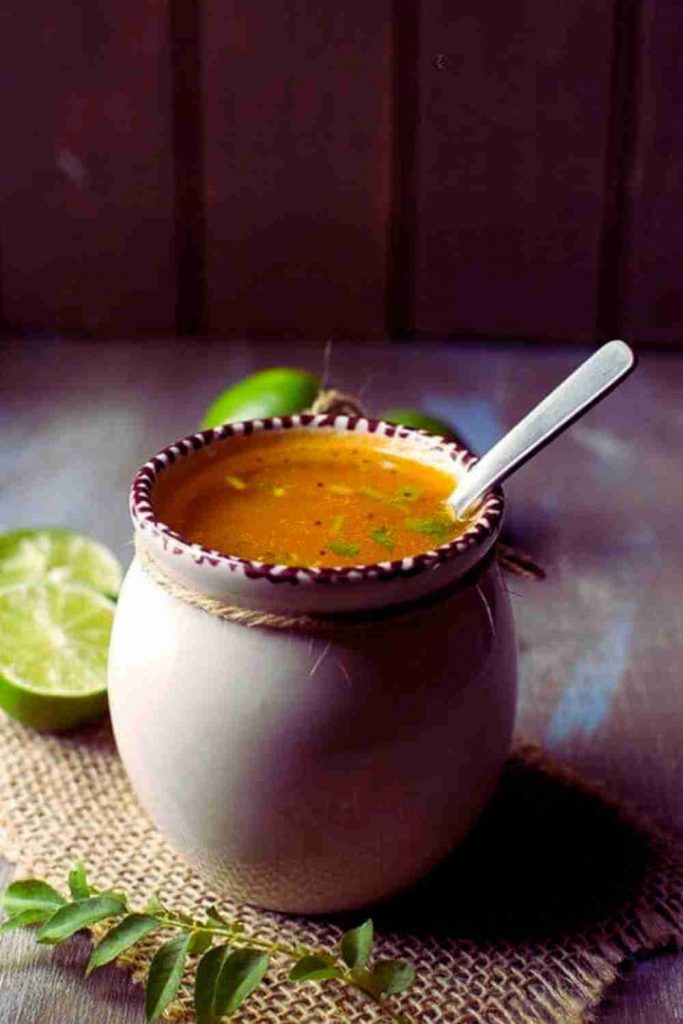
About the Recipe
Rasam is a South Indian soup traditionally made with tamarind juice as a base, infused with tomato, chili, pepper, cumin, and other spices. It is not only known for its appetizing taste but also for its digestive and medicinal properties.
Ingredients
- 1/2 cup tamarind juice
- 2 tomatoes, finely chopped
- 1 tsp black pepper
- 1 tsp cumin seeds
- 2-3 garlic cloves
- 1/4 tsp turmeric powder
- 1/2 tsp mustard seeds
- A few curry leaves
- 2-3 dried red chilies
- 1 tbsp chopped coriander leaves
- 2 tbsp oil
- Salt to taste
Preparation Time
10 minutes
Cooking Time
20 minutes
Total Time
30 minutes
Cuisine
South Indian
Course
Appetizer/Side Dish
Diet
Vegetarian
Instructions
- Crush black pepper, cumin seeds, and garlic to make a coarse paste.
- Heat oil in a pot, add mustard seeds, dried red chilies, and curry leaves.
- Add the tomatoes, turmeric powder, and the crushed spice paste. Cook until tomatoes soften.
- Add tamarind juice, salt, and bring to a boil. Simmer for a few minutes.
- Garnish with coriander leaves before serving.
Serving Size
Serves 4
Nutrition Facts
- Calories: Approximately 35 per serving
- Rich in vitamins and antioxidants, and known for its digestive properties.
Conclusion
Rasam is a perfect blend of taste and health, a testament to the traditional wisdom embedded in South Indian culinary practices.
FAQs
Can I add lentils to Rasam?
Yes, some versions include cooked and mashed lentils for added texture and nutrition.
Is it necessary to use tamarind?
Tamarind gives Rasam its characteristic tanginess, but you can substitute it with lemon or lime juice for a different flavor profile.
Sambar – The Heart of Pongal Dishes
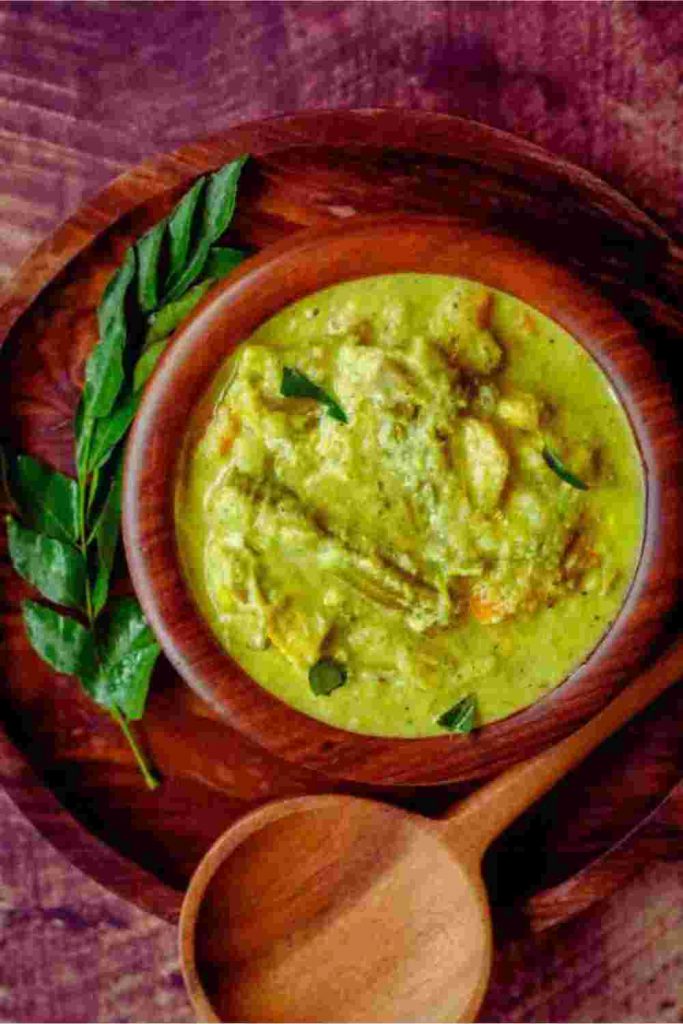
About the Recipe
Sambar is a flavorful lentil-based vegetable stew, integral to South Indian meals. It combines a variety of vegetables, lentils, and a distinct blend of spices and tamarind. Sambar is not just a culinary delight but also a nutrition-packed dish.
Ingredients
- 1/2 cup toor dal (split pigeon peas)
- 2 cups mixed vegetables (such as drumstick, pumpkin, carrot, okra, and eggplant)
- 1 small tamarind ball (size of a lemon)
- 2 tbsp Sambar powder
- 1 tsp mustard seeds
- 1/2 tsp asafoetida (hing)
- A few curry leaves
- 2 dry red chilies
- 1/4 tsp turmeric powder
- Salt to taste
- 2 tbsp oil
- Coriander leaves for garnish
Preparation Time
10 minutes (excluding dal soaking time)
Cooking Time
30 minutes
Total Time
40 minutes
Cuisine
South Indian
Course
Main Course/Side Dish
Diet
Vegetarian
Instructions
- Cook toor dal until mushy and set aside.
- Soak tamarind in water, extract the juice, and set aside.
- Cook the vegetables with turmeric powder, salt, and enough water. Add the tamarind extract and Sambar powder.
- Add the cooked dal to the vegetables and bring to a boil.
- In another pan, heat oil, add mustard seeds, asafoetida, dry red chilies, and curry leaves. Add this tempering to the Sambar.
- Garnish with coriander leaves.
Serving Size
Serves 4-6
Nutrition Facts
- Calories: Approximately 130 per serving
- Rich in protein, fiber, and essential nutrients from the lentils and vegetables.
Conclusion
Sambar is not just a dish; it’s a comfort food that resonates with the warmth and richness of South Indian culinary traditions.
FAQs
Can I use other types of lentils for Sambar?
Traditionally, toor dal is used, but masoor dal or moong dal can also be substituted.
How do I achieve the perfect Sambar consistency?
The key is to balance the quantity of dal, vegetables, and water. It should be neither too thick nor too thin.
Payasam – A Symphony of Sweets In Pongal Dishes
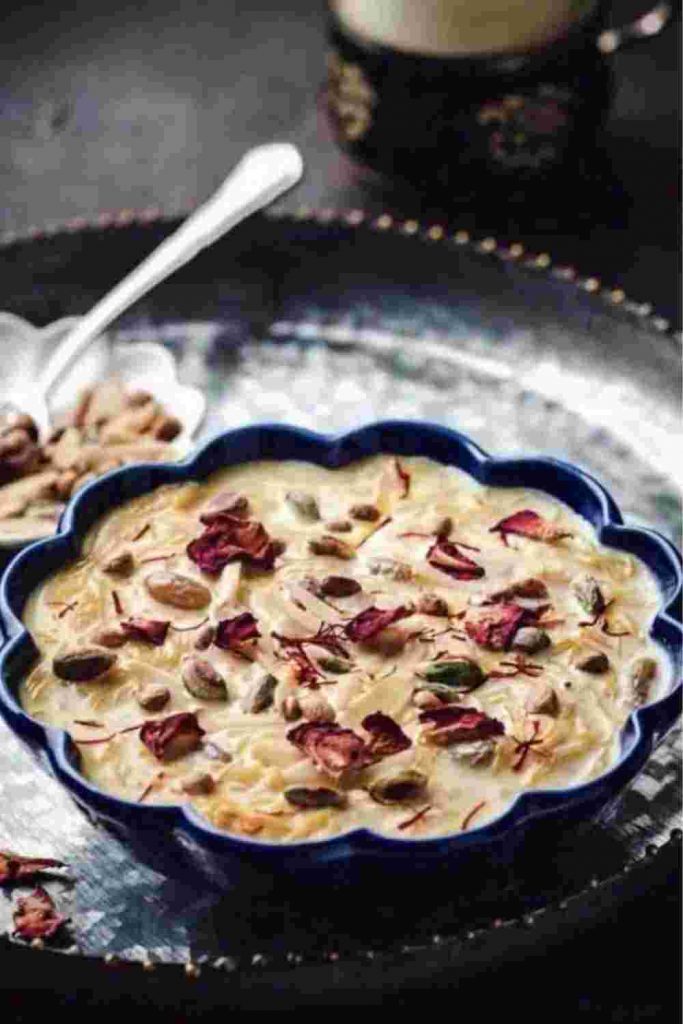
About the Recipe
Payasam is a sweet and creamy dessert, essential to South Indian culinary traditions. Made with milk, sugar, and a variety of grains or vermicelli, it’s often flavored with cardamom, nuts, and raisins. Payasam’s comforting sweetness makes it a favorite at festive gatherings.
Ingredients
- 1/2 cup rice or vermicelli
- 4 cups milk
- 3/4 cup sugar
- 1/4 cup ghee
- 1/2 tsp cardamom powder
- A handful of cashews and raisins
- A few strands of saffron (optional)
Preparation Time
10 minutes
Cooking Time
30 minutes
Total Time
40 minutes
Cuisine
South Indian
Course
Dessert
Diet
Vegetarian
Instructions
- In a heavy-bottomed pan, heat ghee and lightly roast the cashews, raisins, and rice or vermicelli until golden.
- Add milk to the pan and bring to a boil. Reduce the heat and simmer, stirring occasionally, until the rice or vermicelli is cooked and the mixture thickens.
- Add sugar and cardamom powder, and continue to simmer until the sugar is dissolved.
- For added flavor, sprinkle a few strands of saffron.
- Serve warm or chilled, garnished with the roasted nuts and raisins.
Serving Size
Serves 4-6
Nutrition Facts
- Calories: Approximately 250 per serving
- Rich in carbohydrates and provides calcium from the milk.
Conclusion
Payasam is more than just a dessert; it is a celebratory dish that brings sweetness to special occasions and is a testament to the rich culinary heritage of South India.
Pongal Dishes – FAQs
Can I make Payasam with other ingredients?
Yes, Payasam can be made with different ingredients like moong dal, semolina, or even with fruits.
How can I make a vegan version of Payasam?
Use plant-based milk like coconut milk or almond milk as a substitute for dairy milk.
Puli Pongal
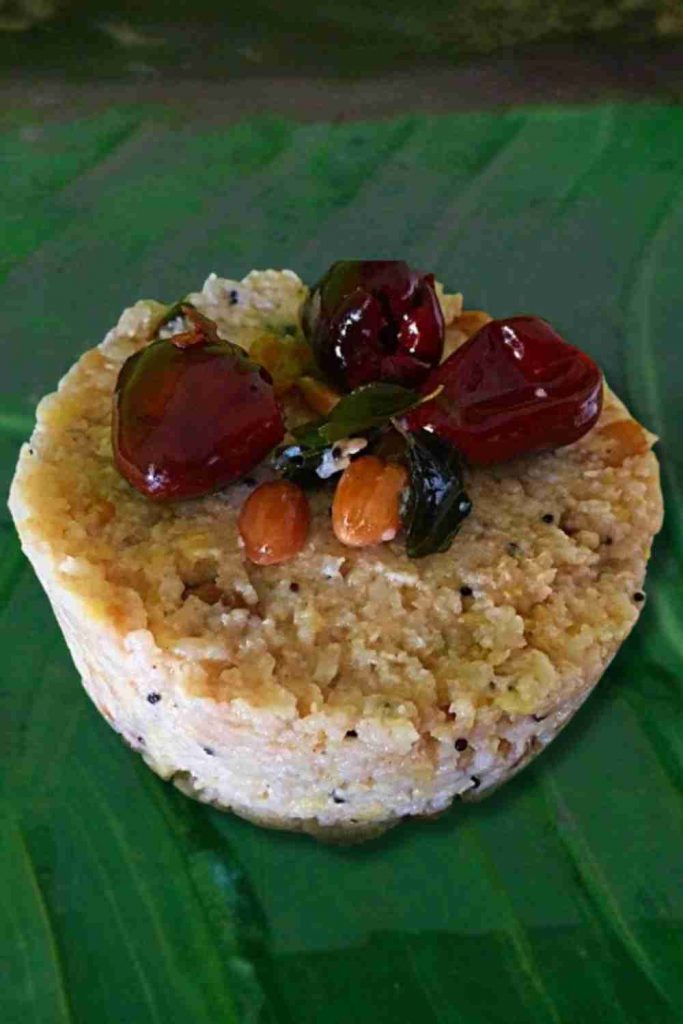
About the Recipe
Puli Pongal is a unique and flavorful dish from the South Indian cuisine palette. It is a tangy and savory rice dish made with tamarind and spices, offering a delightful contrast to the more commonly known sweet Pongal.
Ingredients
- 1 cup rice
- A lemon-sized ball of tamarind
- 2 tbsp sesame oil
- 1 tsp mustard seeds
- 1 tsp urad dal (split black gram)
- 1/4 tsp asafoetida (hing)
- 2 dry red chilies
- A few curry leaves
- 1/2 tsp turmeric powder
- Salt to taste
- 1/4 cup peanuts or cashews (optional)
Preparation Time
10 minutes (excluding rice cooking time)
Cooking Time
20 minutes
Total Time
30 minutes
Cuisine
South Indian
Course
Main Course
Diet
Vegetarian
Instructions
- Cook the rice and set aside.
- Soak tamarind in warm water, extract the juice, and strain it.
- In a pan, heat sesame oil, add mustard seeds, urad dal, asafoetida, dry red chilies, and curry leaves.
- Once the mustard seeds splutter, add the tamarind extract, turmeric powder, and salt. Boil until the raw smell of tamarind goes away.
- Add this mixture to the cooked rice. Stir well and garnish with roasted peanuts or cashews.
Serving Size
Serves 4
Nutrition Facts
- Calories: Approximately 220 per serving
- Provides carbohydrates and is flavored with spices that aid digestion.
Conclusion
Puli Pongal, with its tangy taste and aromatic spices, is a delightful variation of the Pongal dishes, offering a unique taste experience that epitomizes the diversity of South Indian cuisine.
FAQs
Can I add vegetables to Puli Pongal?
Yes, adding vegetables like peas or bell peppers can enhance its nutritional value and taste.
How do I balance the tanginess of the dish?
Adjust the amount of tamarind to suit your taste preference.
Conclusion
Our culinary exploration across the spectrum of South Indian Pongal dishes, from the hearty Ven Pongal to the sweet Sakkarai Pongal, the crispy Medu Vada, the nutritious Avial, and the array of flavorful Pongal dishes like Lemon, Coconut, and Tamarind Rice, has been a journey of rich tastes and traditions. If you’re eager to recreate these authentic South Indian flavors at home, you can easily find the necessary ingredients on top online shopping sites in India.
The comforting Rasam and Sambar speak of home and hearth, while the sweet Payasam and tangy Puli Pongal celebrate the festivity and spirit of South India. Each dish, with its unique blend of spices and ingredients, not only delights the palate but also offers a window into the cultural and culinary heritage of this diverse and vibrant region.


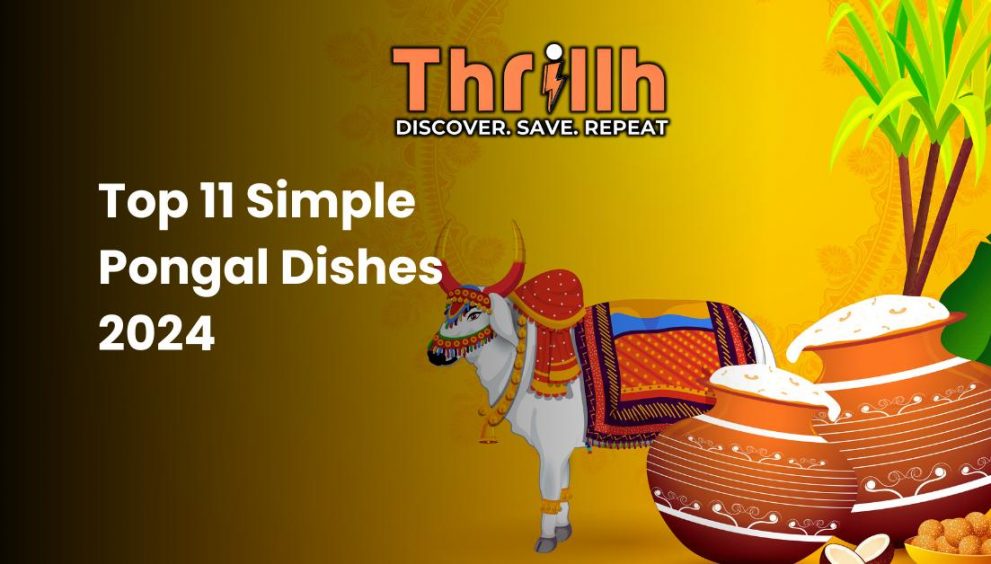



10 Best Restaurants In Hyderabad (Updated 2024)
21st Jun 2024[…] are known for pushing the boundaries of culinary creativity, presenting unique and imaginative dishes that surprise and delight their […]
Www.Waste-Ndc.Pro
28th Dec 2024great issues altogether, you just received a emblem new
reader. What could you recommend about your publish that
you made a few days ago? Any sure? https://www.Waste-ndc.pro/community/profile/tressa79906983/
http://VN-Info.net/user/Vilianallo/
05th Jul 2025I am in fact thankful to the holder of this site who has shared this enormous
piece of writing at at this place.
Feel free to surf to my blog :: http://VN-Info.net/user/Vilianallo/
http://Www.Latechbbb.com/forum/member.php?97212-Vilianalcz
05th Jul 2025Right hsre iis the perfect blopg for everyone
wwho wants to find out about this topic. You know a whole llot iits almost
hard too argue with you (not tat I actually would want to…HaHa).
You definitely pput a brand new spin on a subect that’s been discussed for decades.
Wonderful stuff, just excellent!
my web page; http://Www.Latechbbb.com/forum/member.php?97212-Vilianalcz